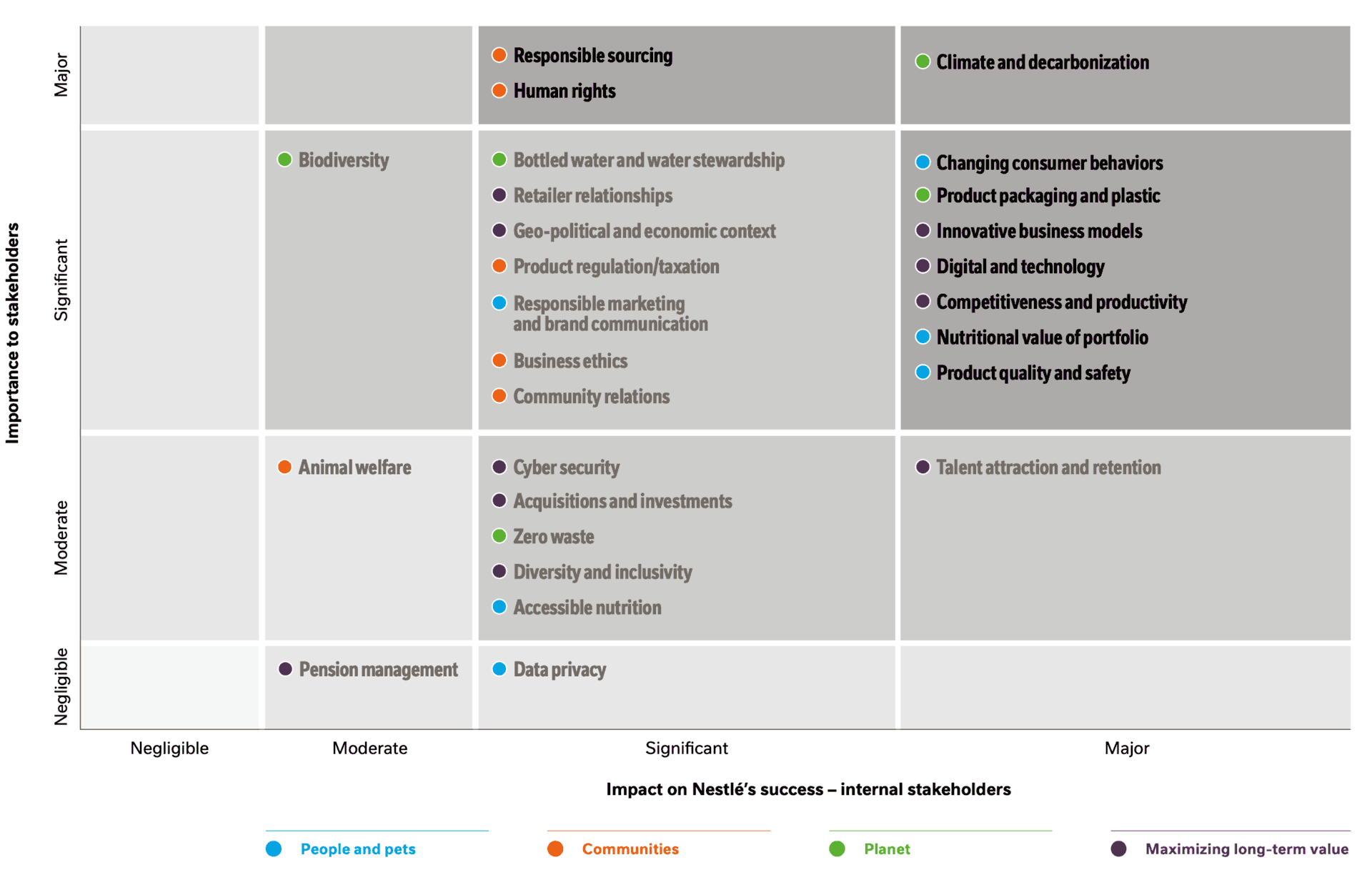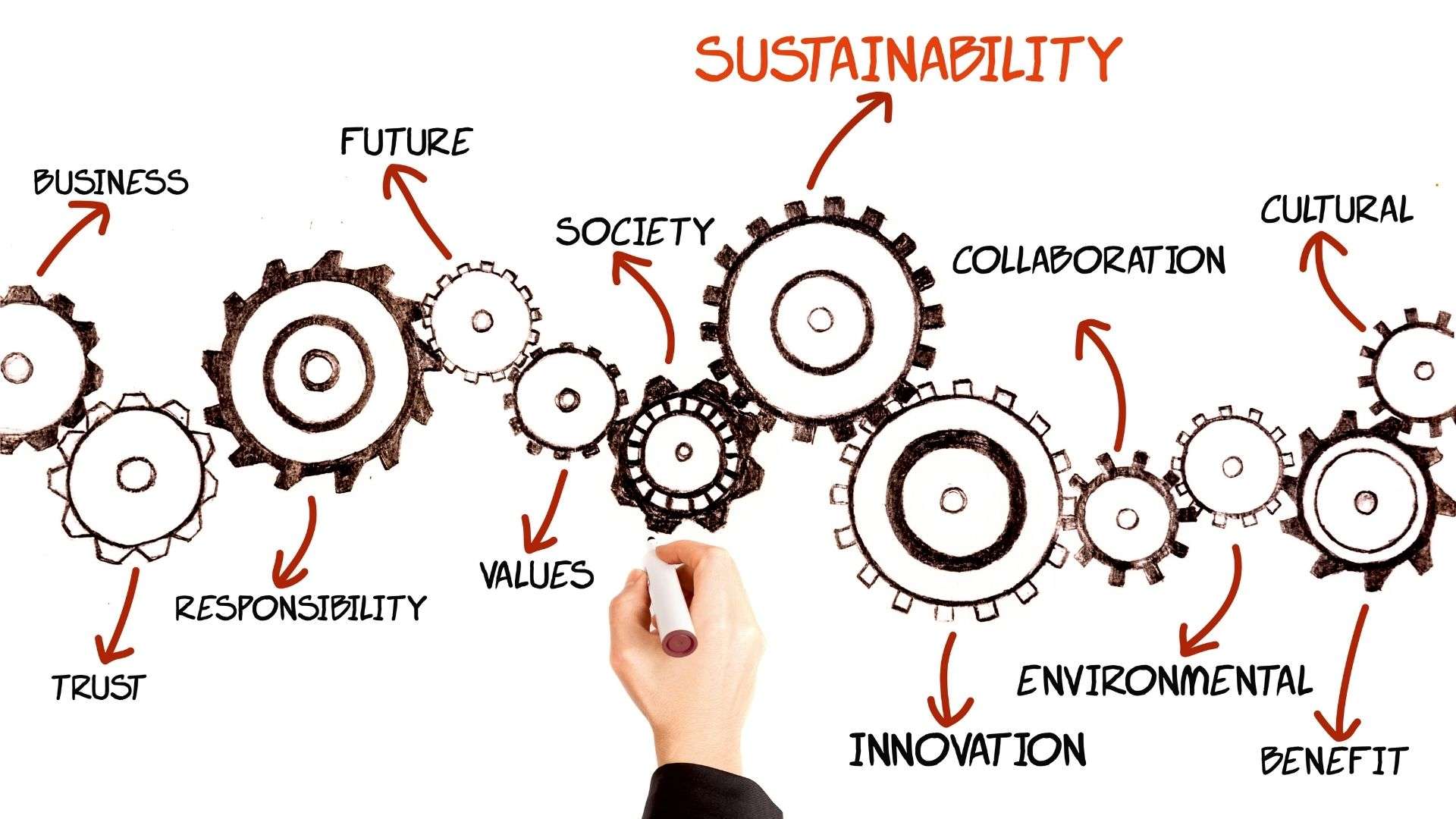Materiality assessment is a key component of sustainability reports. A study found that more than 60% of the logistics companies have presented a materiality assessment in their sustainability reports. Companies conduct materiality assessments to identify their material topics. Global Reporting Initiative (GRI) has introduced a standard (GRI 3) to assist companies in identifying martial topics. According to GRI 3, material topics represent the organisation’s most significant impact on the economy, environment, and people. So, why is materiality important in sustainability reporting?
Source: Merck KGaA
What is Materiality In Sustainability Reporting?
Materiality assessment is a tool to identify issues that are most likely to affect their economic, social, and environmental impact. This helps management better understand and act on sustainability factors that may impact its operations in the future.
Why do we need Materiality Assessments?
Firstly, materiality assessment is a kind of risk management.
Secondly, these assessments provide a sense of the firm’s sustainability issues. Hence, it helps prioritise and act on those issues which are of the highest importance to the business. It also guides businesses on how to use their limited resources.
Finally, materiality assessment leads to making correct decisions. Companies can make their decisions based on the information presented in the materiality assessment. This makes sure organisations select their business strategies logically and wisely.
What are the benefits of Materiality Assessments?
Conducting a materiality assessment:
- Provides an opportunity to identify the risks and potentials of the business.
- Guides companies to decide on correct business strategies
- Helps identify the sustainability performance or direction of the company.
- Facilitates keeping good relationships with company stakeholders by identifying their expectations.
- Helps better communicate corporate sustainability reporting.

Source: Smita Pandey Mishra
What is the Materiality Matrix, and How do we make it?
The materiality matrix shows the results of a material assessment. Further, It helps visualise the findings of a materiality assessment. Companies present their materiality matrix in different ways. However, it should be presented relative to the degree of stakeholders’ interest and potential business impacts.
The Global Reporting Initiative (GRI) defines two axes of the materiality matrix: Firstly, the issues that are most important to stakeholder assessments and decisions regarding the company, and secondly, the most significant economic, environmental, and social impacts of the company’s business. To create a visual matrix, companies should show what the biggest impacts of their business operations are, and what stakeholders want to know about their operations. This is possible by identifying the material topics.
How to Identify Material Topics?
According to GRI 3, the process of identifying material topics includes four steps.
Step 1: Identifying the organisation’s context.
This includes identifying the company’s business activities, relationships, stakeholders, and sustainability context of their subsidiaries, joint ventures, or affiliates.
Step 2: Identify actual and potential impacts.
The actual impacts mean the impact that has already happened, and potential impacts mean the impact that has not yet happened but could occur in the future. These impacts may be positive or negative, short-term or long-term, intended or unintended, and reversible or irreversible. Companies should identify these impacts on the economy, environment, and society, including human rights.
Step 3: Assess the significance of the impact.
Determining the significance of impact depends on several factors. It may be specific to the organisation, and may also be influenced by the organisational sector and its relationships. This is a subjective decision, and it includes qualitative and quantitative analysis. Thus, companies should consult relevant internal and external experts to assess the significance of impacts.
Step 4: Prioritising the most significant impact.
Prioritising the impact enables companies to take action against risks. Companies should be able to arrange their impact from the least to the most significant. In order to do that, the first group identifies impacts on a number of topics and ranks them based on their significance. It is then that they determine a cut-off point to report them.

Source: Nestle
When Materiality Assessments Come up Short in sustainability reporting
Identifying material issues involves reaching out to internal and external stakeholders for their input. This can be incredibly time-consuming and might mean some organisations skate over important data or pay inadequate attention to their strategy. There also seems to be fundamental confusion about what a “material” issue is. This point is not necessarily made clear. While the GRI states there should be a strong link between materiality and strategy, the guidance is focused on what to report on, not what the strategy should be.
Another problem may be that what is most ‘material’ from the reporting stage may differ from what actually gets prioritised in the organisation’s sustainability strategy. Furthermore, findings reveal that some companies could be using materiality analysis to further embellish performance for greenwashing purposes.
Despite these shortcomings, materiality assessments serve as an important starting point. They enable companies to improve their understanding of the environmental aspects that are essential to their business strategy, as well as those that are necessary to help stakeholders make informed decisions.
5 Ways to Improve Materiality Assessments
- Keep a broad scope: Survey the issues widely and deeply among organisational activities, employees, stakeholders and the community.
- Keep getting feedback: Continue to consult with the company’s stakeholders and internal and external experts.
- Maintain integration: Do not isolate the process of materiality assessment from the other business operations.
- Take a context-based approach: Use all available information and, for perspective, look at the global context affecting your industry/stakeholders.
- Leverage the results: Use the data and stakeholder insights to drive strategy. Creating the report is important, but make sure you strategise your results – this helps you to identify important areas to address, stay ahead of regulations, and keep abreast of employee expectations, marketplace trends and emerging global issues.
Moving Forward
When done well, a materiality assessment asks the right questions, chooses the right stakeholders, applies the appropriate methodology, and visually presents the information effectively to help inform future decisions.
Why is a focus on Materiality in sustainability reporting essential?
It is essential to focus on materiality in sustainability reporting, as this is a key component that links not only the different social and environmental issues we face across the globe but also how these interact with a company’s operations. By having materiality in sustainability as a focus, all areas that affect a company’s potential, including the environmental and social issues that we face, are considered innately.

Source: TÜV NORD GROUP
achieving the United Nation’s Sustainable Development Goals (SDGs) and how they link to Materiality in sustainability reporting
Materiality in sustainability reporting is linked to many of the United Nations Sustainable Development Goals (SDGs). This includes those SDGs concerned with the environment, such as SDG 13 (Climate Action), as well as those concerned with social sustainability, like SDG 10 (Reduced Inequalities).
A Thrivable Framework
Materiality in sustainability reporting is concerned with many of the environmental or ecological issues, as well as social issues we face in the world, and how these relate to a company’s operations and its impacts within these areas. Whilst addressing many of the social issues within our society, the THRIVE Project invests interest in issues fundamental to preserving the natural world, as well as safeguarding the environment.
THRIVE Framework examines issues and evaluates potential solutions – making predictive analyses using topics such as those discussed in this article that support environmental and social sustainability transformations. We recognise that the pursuit of human happiness can sometimes compete with environmental well-being. Therefore, THRIVE utilises our ciambella chart to illustrate the concept of the ‘thrivable zone.’
The climate crisis and the social and environmental issues we face, which materiality in sustainability reporting is primarily concerned with, are paramount to THRIVE’s mission. THRIVE ultimately promotes that environmental, ecological, and social needs can be met simultaneously without adversely encroaching on each other. By researching, educating, and advocating on these issues, we can make the changes required.
To learn more about how The THRIVE Project is researching, educating, and advocating for a future beyond sustainability, please visit our website. You can follow our informative blog and podcast series to learn about our regular live webinars. We feature experts in sustainability fields, including many rich discussions on social inclusion. Sign up for our newsletter for regular updates.